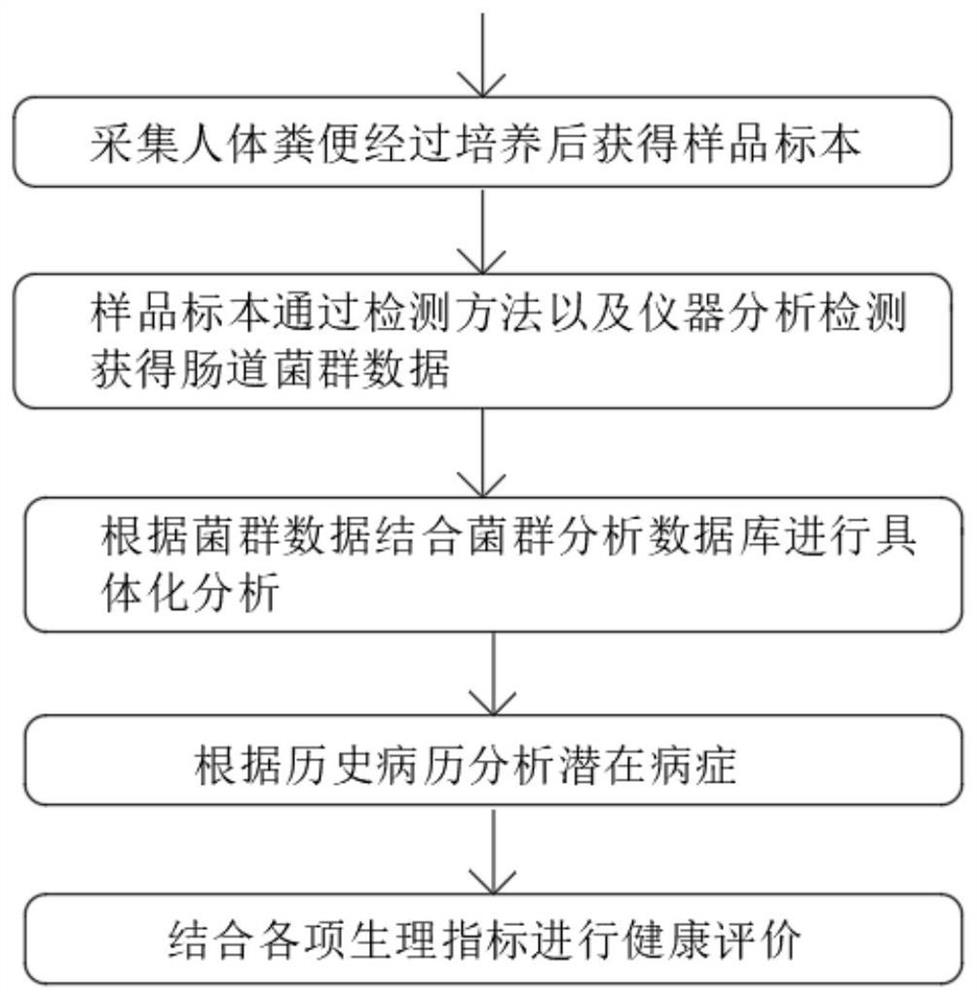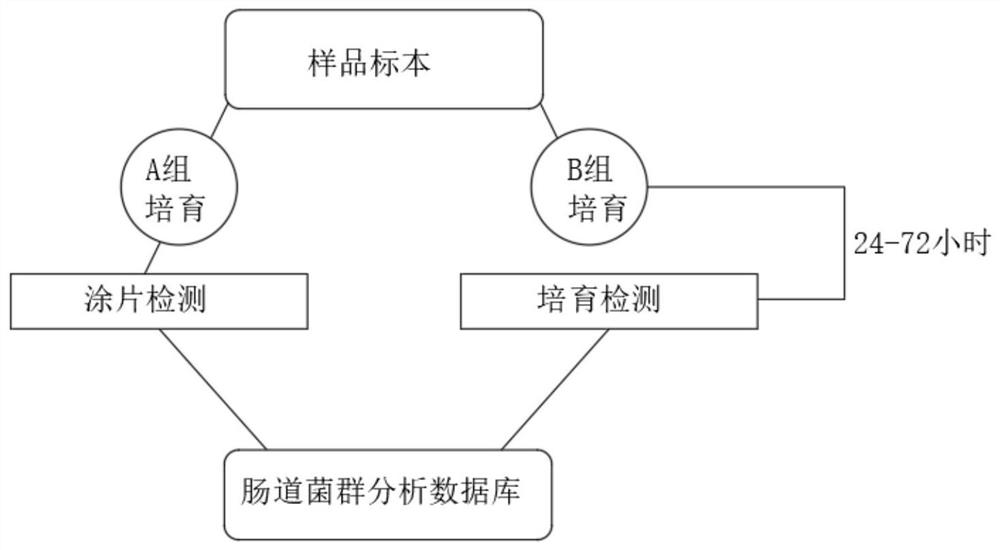Health evaluation method taking intestinal flora characteristics as core
A technology for intestinal flora and health evaluation, which can be used in microorganism-based methods, health index calculation, biochemical equipment and methods, etc., and can solve problems such as harm to human health.
- Summary
- Abstract
- Description
- Claims
- Application Information
AI Technical Summary
Problems solved by technology
Method used
Image
Examples
Embodiment 1
[0030] A health assessment method based on the characteristics of intestinal flora (patient 1)
[0031] The first step is to collect human feces samples and obtain sample specimens after culturing. The patient’s feces are collected as samples and divided into two equal parts of 20g to obtain group A samples and group B samples. Cultivate, wherein, the culture conditions of A group sample and B group sample are respectively:
[0032] Add 200ml of distilled water to 20g of group A samples, cultivate, place in a sealed anaerobic petri dish, then keep the surface temperature of the petri dish at 37°C, and incubate for 2 hours to obtain group A culture samples;
[0033] Add 20g of group B samples with 300ml of distilled water for incubation, place them inside a sealed petri dish with an oxygen content of 8%, then keep the surface temperature of the petri dish at 37°C, and incubate for 2 hours to obtain group B culture samples;
[0034] In the second step, the sample specimens are ...
Embodiment 2
[0039] A health assessment method based on the characteristics of intestinal flora (patient 2)
[0040] The first step is to collect human feces samples and obtain sample specimens after culturing. The patient's feces are collected as samples and divided into two equal parts of 10g to obtain group A samples and group B samples. Cultivate, wherein, the culture conditions of A group sample and B group sample are respectively:
[0041] Add 100ml of distilled water to 10g of group A samples, incubate, place in a sealed anaerobic petri dish, then keep the surface temperature of the petri dish at 37°C, and incubate for 2 hours to obtain group A culture samples;
[0042] Add 10g of group B samples with 150ml of distilled water for incubation, place them inside a sealed petri dish with an oxygen content of 8%, then keep the surface temperature of the petri dish at 37°C, and incubate for 2 hours to obtain group B culture samples;
[0043] In the second step, the sample specimens are obt...
Embodiment 3
[0048] A health assessment method based on the characteristics of intestinal flora (patient 3)
[0049] The first step is to collect human feces samples and obtain sample specimens after culturing. The patient’s feces are collected as samples and divided into two equal parts of 15g to obtain group A samples and group B samples. Cultivate, wherein, the culture conditions of A group sample and B group sample are respectively:
[0050] Add 150ml of distilled water to 15g of group A samples to incubate, place in a sealed anaerobic petri dish, then keep the surface temperature of the petri dish at 37°C, and incubate for 2 hours to obtain group A culture samples;
[0051] Add 15g of group B samples with 225ml of distilled water for incubation, place them inside a sealed petri dish with an oxygen content of 8%, then keep the surface temperature of the petri dish at 37°C, and incubate for 2 hours to obtain group B culture samples;
[0052] In the second step, the sample specimens are...
PUM
 Login to View More
Login to View More Abstract
Description
Claims
Application Information
 Login to View More
Login to View More - R&D
- Intellectual Property
- Life Sciences
- Materials
- Tech Scout
- Unparalleled Data Quality
- Higher Quality Content
- 60% Fewer Hallucinations
Browse by: Latest US Patents, China's latest patents, Technical Efficacy Thesaurus, Application Domain, Technology Topic, Popular Technical Reports.
© 2025 PatSnap. All rights reserved.Legal|Privacy policy|Modern Slavery Act Transparency Statement|Sitemap|About US| Contact US: help@patsnap.com



